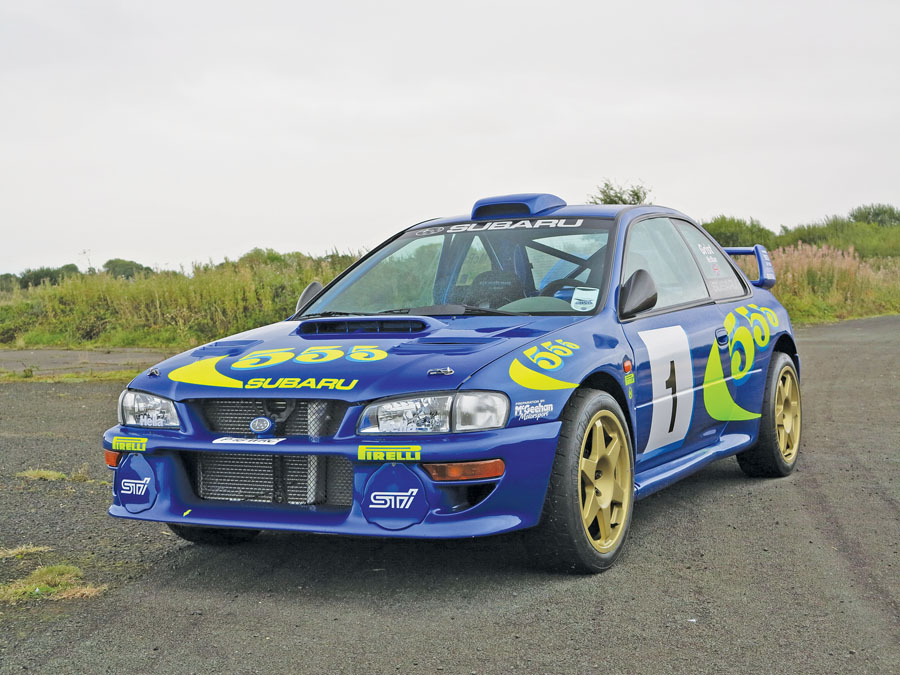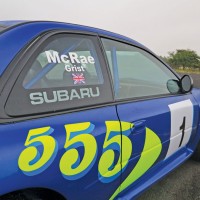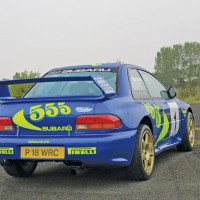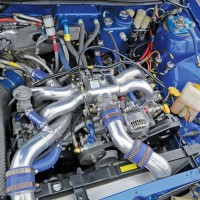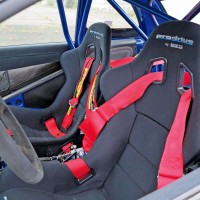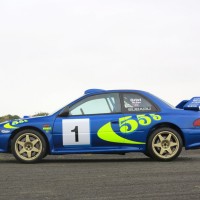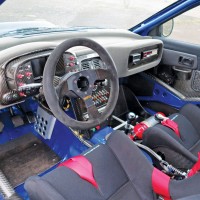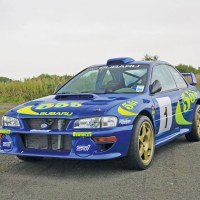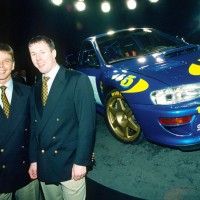SCM Analysis
Detailing
| Vehicle: | 1996 Subaru Impreza WRC97 Rally Car |
| Years Produced: | 1996 |
| Original List Price: | N/A |
| SCM Valuation: | $180,000–$240,000 |
| Chassis Number Location: | On bulkhead in engine compartment |
| Engine Number Location: | On block above starter |
| Alternatives: | 1996 Ford Escort WRC, 1996 Mitsubishi Lancer Evo IV, 1996 Toyota Corolla WRC |
| Investment Grade: | C |
This car, Lot 112, sold for £155,000 ($238,413), including buyer’s premium, at H&H’s Imperial War Museum sale in Duxford, U.K., on October 14, 2015.
FIA introduced World Rally Car regulations for the 1997 World Rally Championship season, superseding Group A rules. The change gave competing teams more flexibility, with a spirit not unlike that of the heyday of Group B rallying. The new rules stipulated that the cars may be derived from a family of cars and the base engine needed to be put in 2,500 road cars per year. The goal was to attract new manufacturers to the sport by removing some of the larger and more cumbersome homologation requirements.
From Prodrive and back again
Prodrive, in the midst of their highly successful relationship with Subaru as the Subaru World Rally Team, leapt at the chance to dive into the new 2-door Impreza after winning the manufacturer’s championship two years in a row with their Group A Impreza. Peter Stevens, designer of the McLaren F1, was tasked with reworking the new Impreza to Prodrive’s managing director David Richards’ vision. A season of testing and tweaking on this car followed.
At the car’s press launch in late 1996, Richards waxed poetic upon Prodrive’s changes: “These cars, sure they’ve got the roots in production cars, but we’ve got the lovely, exciting colors, the excitement of the wings, the performance. Everything about them is extending the sport to a new dimension.”
Prodrive won its third-straight WRC manufacturer’s title with our subject car and its WRC97 siblings, besting Ford by 23 points. Colin McRae finished second that year in the driver’s championship — losing out to Tommi Mäkinen by only one point — despite a four-race retirement streak midseason.
Prodrive sold the car to Procar of Spain after the successful 1997 season. The rally-tracking website eWRC-results.com shows P18 WRC raced 80 rallies from 1998 to 2007, with 17 retirements. Notable drivers from this privateer life include Valentino Rossi, Grégoire de Mevius and Jean-Pierre Richelmi.
Prodrive’s contract with Subaru ended as Subaru pulled out of the World Rally Championship altogether after 2008. This car, however, gave their team a fitting and positive closure to the company’s Subaru chapter.
There was no chance this car would sell at this price without Prodrive. Their restoration, as detailed by David Lillywhite of Octane in their May 2010 issue, included a new engine block and specialty exhaust manifolds — both of which the shop had tucked away. Many of the employees were still there from this car’s development in 1996. Sourcing parts from a couple of other rally shops repaired the damaged rear section. One of those shops actually had a set of hand-rolled quarter panels from Prodrive bought years before.
Subaru, meet the market; market, meet Subaru
That the car failed to hit its low estimate of £175,000 ($269,176) isn’t an automatic qualification for the well-bought designation. P18 WRC is the highest bid (and selling) Subaru SCM has ever tracked. The next closest is also a rally car: an ’03 WRX Bonhams didn’t sell in February 2006. That WRX, with reserve reportedly at $70k, was a Group N car — not near the level of P18 WRC. The top selling Subaru previously was a ’98 WRX sold by Bonhams and Brooks in July 2001 for $45,402. That’s about the price for a loaded WRX STi at your Subaru dealer right now.
Rally cars have long been available at auction, with the stars of Group B and Group 4 selling for exorbitant prices lately. The median price point for a Lancia Stratos is $496,121, while an Audi Quattro SWB hovers around $401,500. Subarus haven’t yet resonated with the market, as just six have ever been bid up over $20k at auction. The most frequent auction-going Subaru is the 360 microcar, but it doesn’t have the same “cute” factor — and the subsequent desirability — as an Isetta. Brat pickups might cause a chuckle or curious eyebrow gestures from passersby peering at the rear jump seats, but they’ll keep on walking. No, the first serious-money Subaru really had to be a rally car. It really had to be this rally car.
This is not only a historically significant rally car, but also the most significant Subaru to sell at auction.
That an owner even restored a rally car of this vintage is in and of itself strange. But, as per Lillywhite, he wouldn’t have approached the car without Prodrive ready to restore it. It’s possible that we’ll see more manufacturer-restored rally cars hit the market. But there is only one first Subaru WRC and that’s P18 WRC. The buyer could have spent double, but it’s still just money compared to what this car means to rallying. Let’s include introducing the high-end collector car market to Subaru to this car’s long list of achievements. ♦
(Introductory description courtesy of H&H.)
